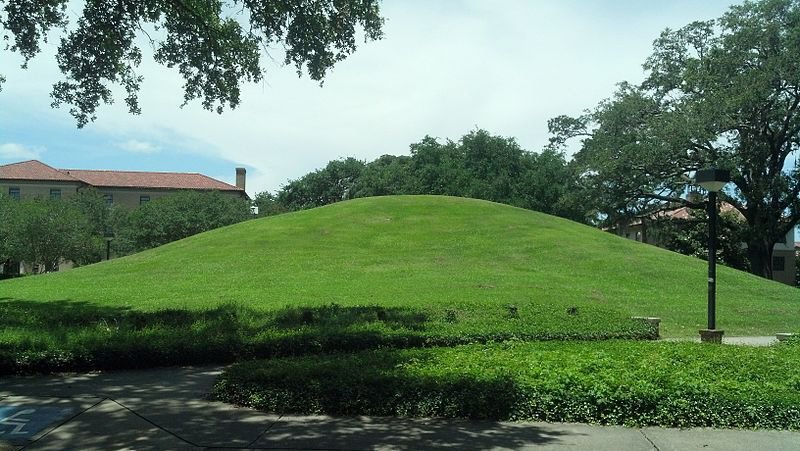We all know that America is a vast continent, rich with diverse culture and ethnicity. A lot of people all over the world had migrated to the United States in hope of not only having a brighter future but reuniting with their families too. Aside from that, there are immigrants who wished to flee from the terrors of war and seek a new life in this peaceful place. Ever since the Second World War, Americans had started opening up their borders to accept refugees. This has paved way for Europeans to leave the North and flee to the West. That’s why the American culture became a mix of ethnicity and tradition from all over the world. However, did you know that you can still find the original American historic heritage?
Long before the Europeans migrated to America, there were indigenous people who were preserving the original ethnicity of Americans. Today, most of these indigenous people live in thriving communities and the language, cultural practices, and oral histories of native Americans were passed down to their descendants who have maintained heritage up to this day. Suffice to say they did a great job in preserving the Native American culture despite the war, genocide, and cultural destruction we’ve endured for the past century. Not only that, but ancestors also preserved physical histories and evidence of cultural heritage.
If you want to learn more about our Origin, here are the cultural centers, parks, and indigenous mounds you can find todepict our nativity.
Monte Sano – Baton Rouge, LA

Monte Sano Mounds Existed Before It was Converted into a Highway in 1967.
This is the restored picture of Monte Sano Mounds the archaeologists had recorded before 1967. Why? It’s because around that year, this indigenous mound was destroyed in favor of building a highway. This was considered as the oldest ruin in America. The archaeologist had to dig the mound for three days to salvage whatever platforms there were left. Some of them included cremated remains and funerary objects that made scientists believe mound was solely used for burial purposes. The Monte Sano mound was once part of King George Island Mound site, which is now underneath the city of Baton Rouge.
Poverty Point – Pioneer, LA

Poverty Point Mound was built by rich people that lived in this area.
Another indigenous mound you’ll find in Los Angeles State is the famous poverty point. What’s ironic about its name is that this mound is technically surrounded by an enormous mound complex built by rich people. But for those who didn’t know, its name was derived from a plantation that existed in the same location around 1800s. It was the largest known mound complex of its time, and it’s believed that it existed already about 3000 years ago with an astounding height of around 70 feet. Some even believed that, many years ago, it was 100 feet high. This indigenous mound was surrounded by six semicircles with dwellings on top of them. The entire indigenous mound was also an active venue with extremely active and ceremonial center that was used by tribes to perform their ceremonies and rituals. Since 2014, this mound is recognized as a marvel of architecture and engineering and was included as a protected site of UNESCO World Heritage site.
Serpent Mound – Peeblesville, OH

Serpent Mound was the most famous indigenious American mound you can find in the state of Ohio
With a vast 14,000 foot long and 3,000 foot high, this mound was considered to be the most famous indigenous mound that existed in the United States. It’s also considered as the world’s largest surviving animal effigy mound. According to research, the Adena people constructed the mound to become a venue of their ceremonial rituals. However, the true purpose of the mound remains unclear up to this day. It was also believed that the ancestors of the Anishinaabeg, Shawnee, Kickapoo,Miami-Ilinois, Meskwaki, and Asakiwaki tribes were the original builders of the mounds.
Cahokia Mounds – Collinsville, IL

Cahokia Mounds is known as the perfect destination to spot solar eclipse.
Bordering the area between Missouri and Illinois State, this mound stands tall and proud with its 100 foot height and vast area of 2,200 acres. The area is so vast that it includes the Monk Mounds, which is considered as the tallest earthwork of the century. The mound was named after the Trappist monks, who once lived around the area. Most people often visit Monk Mounds to watch the phenomenal solar eclipse (even the recent 2017 eclipse) since it offers the greatest view. However, Bill Iseminger, the assistant director of the site, discouraged people to conduct ceremonies around the area as much as possible since it’s also considered a UNESCO protected site for now.
We don’t sanction those kinds of activities because we don’t know what would be appropriate for the people who once lived here,’’ he said. So, Cahokia’s mounds and mysteries are more respected these days.
Ocmulgee National Monument – Macon, GA
Until today, we don’t know the reason why some tribes and ancestors left their mounds behind. However, Ocmulgee mound in Georgia was left behind by Ocmulgee inhabitants when Hernando de Soto and his crew arrived from Spain around 1540. Unfortunately, the Spaniards brought a mysterious disease with them, for which they didn’t have immunity and the disease left around three quarters of them dead. Ocmulgee culture was very rich but the civilization disappeared when, around 1650, another group called the Lamar people established their culture here and preserved their heritage to their descendants for as long as they could. Their descendants were called Muscogee (Creek) and they stayed on this mound until 1830, when President Andrew Jackson moved them to Oklahoma.










